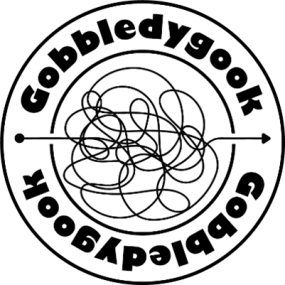Gobbledygook

Maury Maverick, a congressman from Texas, coined the term “gobbledygook” in 1944, calling it “the over involved, pompous talk of officialdom.” He also declared that “anyone using the words ‘activation’ or ‘implementation’ will be shot.” In 1966, a Bureau of Land Management employee—and plain language hero—named John O’Hayre penned an entire book on the subject, titled Gobbledygook Has Gotta Go.
“Newspapermen, magazine writers, and fiction writers have joined in this revolution that demands simple, concise, clear prose,” he lamented. “But not so, government writers!” Almost six decades later, his complaints still ring true. Government writing has made some strides, but we still have a long way to go with clear communication.
Add scientific writing to the mix, and you have a gobbledygook double whammy. In a journal article about lipoprotein lipase activity assay in serum and plasma for the evaluation of lipase activity and triglyceride metabolism, some gobbledygook might be unavoidable. But you can eliminate a lot of it by paying attention to the basic tenets of plain language: Write to your audience in active voice, use simple words and strong verbs, keep sentences short, keep the subject and verb close together, and avoid jargon.
Another way to banish gobbledygook is to write how you talk. Highly educated people have a hard time giving themselves permission to write less formally. Writing like you talk reveals your voice and brings your words to life. The goal is to craft a piece of writing that doesn’t sound like writing, but like a conversation with your reader.
We know that’s easier said than done in an article about triglyceride metabolism, but opportunities for improvement are everywhere. Inspired by the list on Mary Dash’s Writing Tips, below are some examples of banishing gobbledygook from scientific writing. In the immortal words of John O’Hayre, “Have something to say; say it simply; quit!”
Don’t say
Don’t say
Say
Say
There was a lack of sufficient data.
There was a lack of sufficient data.
There were not enough data.
There were not enough data.
Doctors can assist patients in understanding their options.
Doctors can assist patients in understanding their options.
Doctors can help patients understand their options.
Doctors can help patients understand their options.
The work that is the focus of this evaluation pertains to cancer risk in children.
The work that is the focus of this evaluation pertains to cancer risk in children.
This evaluation focuses on cancer risk in children.
This evaluation focuses on cancer risk in children.
The protection of personally identifying information can be achieved.
The protection of personally identifying information can be achieved.
We can protect personally identifying information.
We can protect personally identifying information.
Contact the agency by phone or email.
Contact the agency by phone or email.
Call or email the agency.
Call or email the agency.